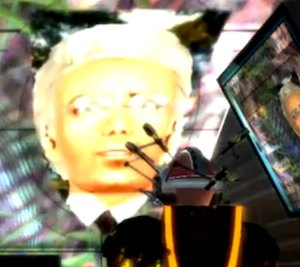 On Monday the University of Western Australia in Second Life had a bash to announce the winners of its MachinimUWA Challenge. What started out as a L$10,000 prize ended up as L$215,000 thanks to the entries being viewed by the University’s Vice-Chancellor, Professor Alan Robson.
On Monday the University of Western Australia in Second Life had a bash to announce the winners of its MachinimUWA Challenge. What started out as a L$10,000 prize ended up as L$215,000 thanks to the entries being viewed by the University’s Vice-Chancellor, Professor Alan Robson.
You can view each of the entries below, with the descriptions all provided by the UWA’s resident dynamo, Jayjay Zifanwe. If you take the time to view each, you’re likely to agree that the overall quality of entries has been very strong. I don’t envy the 12-member international judging panel for the decisions they had to make on the shortlist of thirteen. The final results were:
Winner
CISKO VANDEVERRE, Berlin, Germany
SEEK
“The judges thought that this was an absolute firecracker of a Machinima with a brilliant and very different approach. This had wonderful humour, amazing visual effects, great quality of editing and remarkable camera control.”
Second Prize
BRADLEY CURNOW, Perth, Australia
MachinimUWA: Art Architecture, Research, Teaching
“With Bradley’s work, the judges felt this had wonderful velocity with fantastic cutting to music transients, an epic soundtrack and showed off the “4 main elements” to great effect.”
Third Prize
COLEMARIE SOLEIL, Florida USA
UWA Machinima Challenge Submission
“ColeMarie’s brilliant modern and edgy piece was another favourite. Responding to the announcement, she said, ‘I would like to thank all the artists involved in the creation of the UWA sims,and to UWA in particular, for this terrific opportunity to creatively express myself. To all my friends who gave me my space and understood how much working on this project meant to me, to JayJay for asking me to make this video, and Surrealia Anatine for getting me into machinima to start with. To energy drinks for keep me working late into the night, and Bryn Oh for ‘subtle’ yet threatening encouragements to finish this video.’ ”
Honourable Mention
MASTERDARK FOOTMAN, Dallas, Texas, USA
The Heart of UWA
(video unavailable)
Honourable Mention
CHANTAL HARVEY, Maastricht, Netherlands
University of Western Australia in Second Life
Honourable Mention
LASLOPANTOMIK YAO, Barcelona, Spain
MachinimUWA
Finalist
PYEWACKET BELLMAN, New York City, USA
University of Western Australia in Second Life
Finalist
SOPHIA YATES, Lancaster, Massachusetts, USA
The Challenge – Architecture, Teaching, Research Arts on the UWA sims
Finalist
IONO ALLEN, Paris, France
Seek Wisdom
http://www.youtube.com/watch?v=2knumdykcAE&feature=channel
Finalist
GLASZ DECUIR, San Sebastian, Spain
MachinimUWA: UWA in Second Life, Achieving International Excellence
http://www.youtube.com/watch?v=mK0GQ_kENNI
Finalist
NOVA DYSZEL, Toronto, Canada
UWA in SL Challange
http://www.youtube.com/watch?v=wFkr7wIwZAs
Finalist
MASTERDARK FOOTMAN, Dallas, Texas, USA
UWA Jan 2010
(video unavailable)
Finalist
SOPHIA YATES, Lancaster, Massachusetts, USA
Second Life Virtual University of Western Australia
Details of Judging Panel
1. Professor Alan Robson (RL) – Vice-Chancellor, The University of Western Australia
2. Professor Ted Snell (RL) – Director, Cultural Precinct, The University of Western Australia
3. A/Professor Wade Halvorson (RL) – Lecturing in Marketing, Business and Electronic Commerce, The University of Western Australia
4. Colin Campbell Fraser (RL) – Principal Adviser (External Relations and Advocacy),
Vice-Chancellery, The University of Western Australia
5. Kelly Smith (RL) – Director, International Centre, The University of Western Australia
6. Jon Stubbs (RL) – Director, Student Services, The University of Western Australia
7. Susana Willis-Johnson (RL) – Marketing Manager, The University of Western Australia
8. Dr Carmen Fies (RL) – Assistant Professor, The University of Texas at San Antonio
9. Torley Linden (SL) – Linden Labs
10. White Lebed (SL) – Lead of Burning Life Art Department, Curator
11. Raphaella Nightfire (SL) – CEO SW&MB Fashion Productions, CEO Evane Model Agency, Snr Writer Best of SL Magazine
12. Jayjay Zifanwe (SL) – Owner of The University of Western Australia (SL), Creator & co-host of the UWA 3D Art& Design Challenge
The final word from Jayjay Zifanwe:
“In the words of Torley Linden as he was being TP’ed out at the end of the ceremony to attend to Viewer 2.0 matters, ‘This has been awesometastic!’. Yes Torley. It has indeed.”


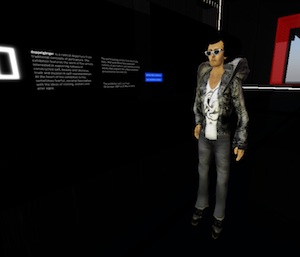
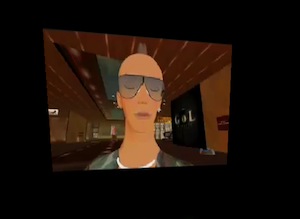
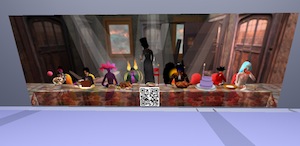





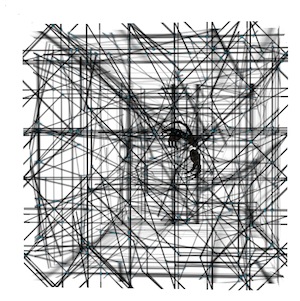
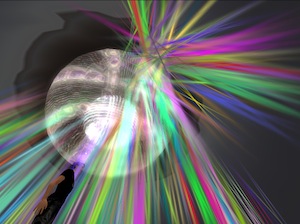 The latest round of winners in the University of Western Australia’s 3D Art and Design Challenge have been announced. The momentum of this competition continues to grow, with a huge number of entries and the addition of Linden Lab CEO Mark Kingdon to the final judging panel.
The latest round of winners in the University of Western Australia’s 3D Art and Design Challenge have been announced. The momentum of this competition continues to grow, with a huge number of entries and the addition of Linden Lab CEO Mark Kingdon to the final judging panel.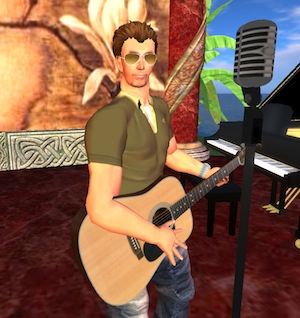
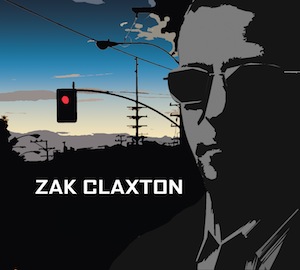 Zak: I tend to create music for the sake of the music, as opposed to ulterior motives like fame or fortune. I can say for sure that I still have a lot of music inside of me that has yet to emerge. I’ve begun writing songs for a second solo album, which I intend to start working on in early 2010. But on an immediate basis, my self-titled debut album is just coming out now, so I have some stuff to do to help promote it. In that regard, I will be doing some live shows in real life, and we’re making an effort to get terrestrial radio airplay here in the USA in addition to the Internet radio play we get on stations like IndieSpectrum Radio and SL Live Radio. While I’m not fooling myself into thinking my album will be some massive pop hit, I still want to do the things that will at least give it a chance to get heard, so the current focus is in that regard. I’m working closely with Kat on this stuff, since we’re partnering in a record label called Frothy Music to do the release of my album.
Zak: I tend to create music for the sake of the music, as opposed to ulterior motives like fame or fortune. I can say for sure that I still have a lot of music inside of me that has yet to emerge. I’ve begun writing songs for a second solo album, which I intend to start working on in early 2010. But on an immediate basis, my self-titled debut album is just coming out now, so I have some stuff to do to help promote it. In that regard, I will be doing some live shows in real life, and we’re making an effort to get terrestrial radio airplay here in the USA in addition to the Internet radio play we get on stations like IndieSpectrum Radio and SL Live Radio. While I’m not fooling myself into thinking my album will be some massive pop hit, I still want to do the things that will at least give it a chance to get heard, so the current focus is in that regard. I’m working closely with Kat on this stuff, since we’re partnering in a record label called Frothy Music to do the release of my album. Zak: Lots and lots of mistakes to avoid. First and foremost, check your ego at the door, as Quincy Jones once famously said. I’ve seen a number of musicians come into SL thinking they should be the hot ticket from day one, since they have a bit of real life experience as a musician. But as I mentioned earlier, there’s actually a pretty deep talent pool in SL, and like any music scene you’re trying to break into, you have some dues to pay in terms of getting recognized.
Zak: Lots and lots of mistakes to avoid. First and foremost, check your ego at the door, as Quincy Jones once famously said. I’ve seen a number of musicians come into SL thinking they should be the hot ticket from day one, since they have a bit of real life experience as a musician. But as I mentioned earlier, there’s actually a pretty deep talent pool in SL, and like any music scene you’re trying to break into, you have some dues to pay in terms of getting recognized.
Recent Comments